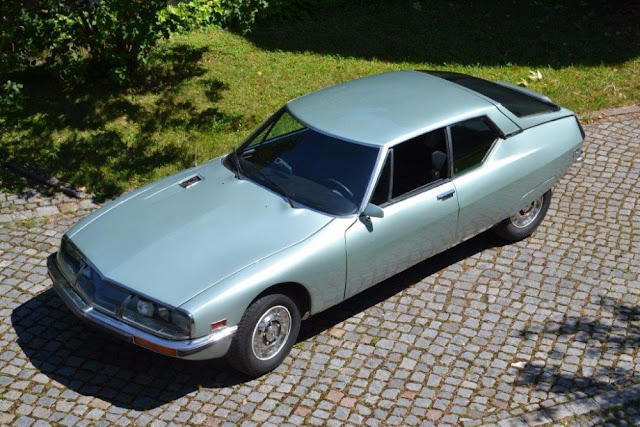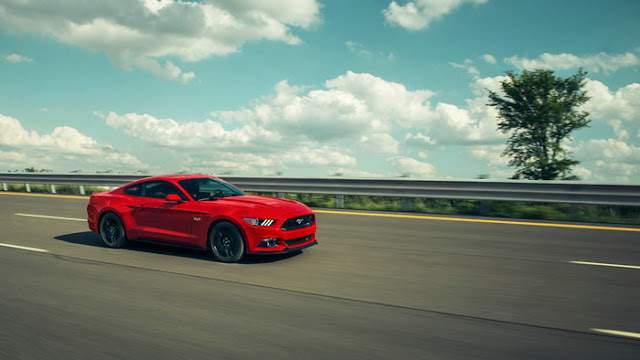Why the Citroën SM is not a GT car
 |
Before I start to make my case, I want to put on record that I love the SM. It looks gorgeous, the Maserati engine is a unreliable yet beautiful unit and there's no denying that it put a giant stamp in automotive history by outperforming much of that era's competition. It's not that I don't like the car to not grant it the title "GT" for 'Gran Turismo' or 'Grand Tourer".
It's a matter of terminology. Not just once have I been made aware of the Citroën SMs Wikipedia page, where under 'class' it's clearly listed as a "Grand tourer". However, on the same table it reads "three door hatchback" and "coupe". By being all three of these, it makes the case for all sorts of cars to be labeled all sorts of things. Just ask yourself, where do you draw the line?
What exactly makes a coupé? What makes a Grand Tourer? What, even, makes a sports car? How do you define the difference between a supercar and a hypercar? It's all blurred lines. What pains me is not the lively discussion as a result - to the contrary. I enjoy both fighting people and writing these silly articles no one reads. It's what the manufacturers make of it.
The "GT" in "GTI" stands for Gran Turismo. That makes your compact econobox on steroids a "Grand Tourer", I guess. Same goes for the four door Kia Stinger GT. Or, my favourite example, the BMW "Gran Coupé", which really is just a fat sedan. "But you're wrong", you think. "The Golf GTI for instance is not listed as a Grand Tourer on Wikipedia".
The bastardification of car terms is a slow but steady process. Already you can read on Wikipedia that a coupé is "usually two-doored", which is bogus and a work of manufacturers wanting to sell low-cost productions to a high-cost audience. I've heard people say the modern Volkswagen Scirocco is a Grand Tourer and a coupé.
I want you to look at a Lamborghini 350GT and a VW Golf in a pretty dress (which the Scirocco basically is) and tell me they belong to the same class or category. I want you to look at a Mk1 Golf, which after all is the predecessor of the car the Scirocco is based on, and then the Volkswagen Up, which is basically a modern iteration of the first Golf and tell me they're Grand Tourers.
I'm aware I'm stretching the bow quite a bit here but you got to understand where I'm coming from and see the bigger picture. By calling a lesser object a higher object, you kill the higher object. By calling aggro-frontscrapers "sports cars", manufacturers are mede to not see why they should go out of their way to make proper sports cars if they might aswell could just put a bigger engine into a compact.
The Toyota GT86 shouldn't have made waves as big as it did. But it's a breed of car on the brink of extinction. The rear wheel driven, dynamic sports car. Take away super cars (Ferrari 488, Porsche 911 and above) and the German premium cars no ordinary guy is able to afford and the modern car catalogues are deserted of sports cars, replaced by cars in the likes of the Renault Megane RS.
But I'll write an article over the disappearence of sports cars and the era of angry grocery getters another time. I had to cut into the topic to make my point, now let's go back to the Citroën SM and GTs. In order to judge whether the SM is a GT car or not, we must define the term Grand Tourer. I guess we can all agree on it to be sporty and a coupé (meaning a two door, two seater with a fixed roof and a separated boot/trunk, able to carry two passengers and their lugage comfortably.
As a point of reference, I'm using the FIA rules on GT-classes from the 1960s. Among other things, they required the car to be able to seat two passengers with a certain car width being mandated, have a certain amount of luggage space and fenders that are embedded in the bodywork. However, we'll use the FIA rules just as that, a point of reference, not tules set in stone.
They require a car to have same sized wheels on both axles and the mirrors to show a certain diameter. Also, cars were allowed to have an open roof and be midengined, things that go against both the car being a coupé and it having enough luggage space for two people. All points that we may neglect for our definition of a Grand Tourer.
With the term tracing its roots to motorsports, we'll add "track capabilities" to the list of GT-requirements. You should be able to get in your car, drive from your office in Rome, Italy to the city of Nürburg in Germany, do a lap on the Nordschleife, drive back to a hotel and after some sleep, go to wherever you got, or want, to be next.
As reference cars, I can so far name the already mentioned Lamborghini 350GT, the Ferrari 250 GT and the Aston Martin DB5. The 350GT was build in the pursuit of the ultimate Gran Turismo (as mentioned by an earlier piece of mine) and the Ferrari 250 GT as the main rival. The DB5 is one of Europe's contribution to the same task as Ferruccio Lamborghinis and Enzo Ferraris, which was to build the definitive grand tourer, a term that was new to the automotive world and therefore untouched, uncontaminated and unspoiled when these cars were built.
Track capability to the extent of being able to compete in GT classes always meant rear-wheel drive. That's why most race cars in early GT races were front-engined, rear-wheel driven cars. It's the natural thing to build, which brings us to the dividing point. The Citroen SM is front-wheel driven. A layout that messes up weight distribution, affects handling negatively and only benefits the car by being cheaper to develop and making the boot larger, hence the layout is the go-to-platform for grocery getters.
I know. Front-wheel-driven race cars can be capable. Many manufacturers dominated touring cars with FR-layouts. We can also never forget the upset of the Mini Cooper in rallying. Hell, even the SM itself was raced moderately successfull in Rallys. But we may also not forget, that there's a reason why the FR-layout found no use in endurance racing. Just think of the front-driven Nissan GT-R Nismo LMP1 car that failed catastrophically at Le Mans in 2015.
It is too unbalanced, too restricting outside of rally stages. For cars like the modern Honda Civic Type R and its competitors, it took a great deal of engineering and programming to balance out torque steer and give it the stability of a car that has 50:50-weight distribution and divides the tasks of steering, braking and accelerating up on its two axles.
I hate not calling the Citroën SM a grand tourer. It pains my heart, even if I may haven't shown it. The SM will very likely take you from one European metropol to another faster, more comfortable and with more style and grace than many cars that do qualify as GTs according to this. I will never deny this. But we also got to protect the integrity of the term GT (or what's left of it).
Among the obvious things, a GT must be rear-wheel driven. I know it technically doesn't affect its 'grand touring abilities' if a car comes in front-wheel drive or all-wheel drive but if it does, it isn't a GT. That does not, under any circumstances, mean the car isn't good enough for being a GT. It just simply isn't what a GT is, or should be.
Photos:



Kommentare
Kommentar veröffentlichen